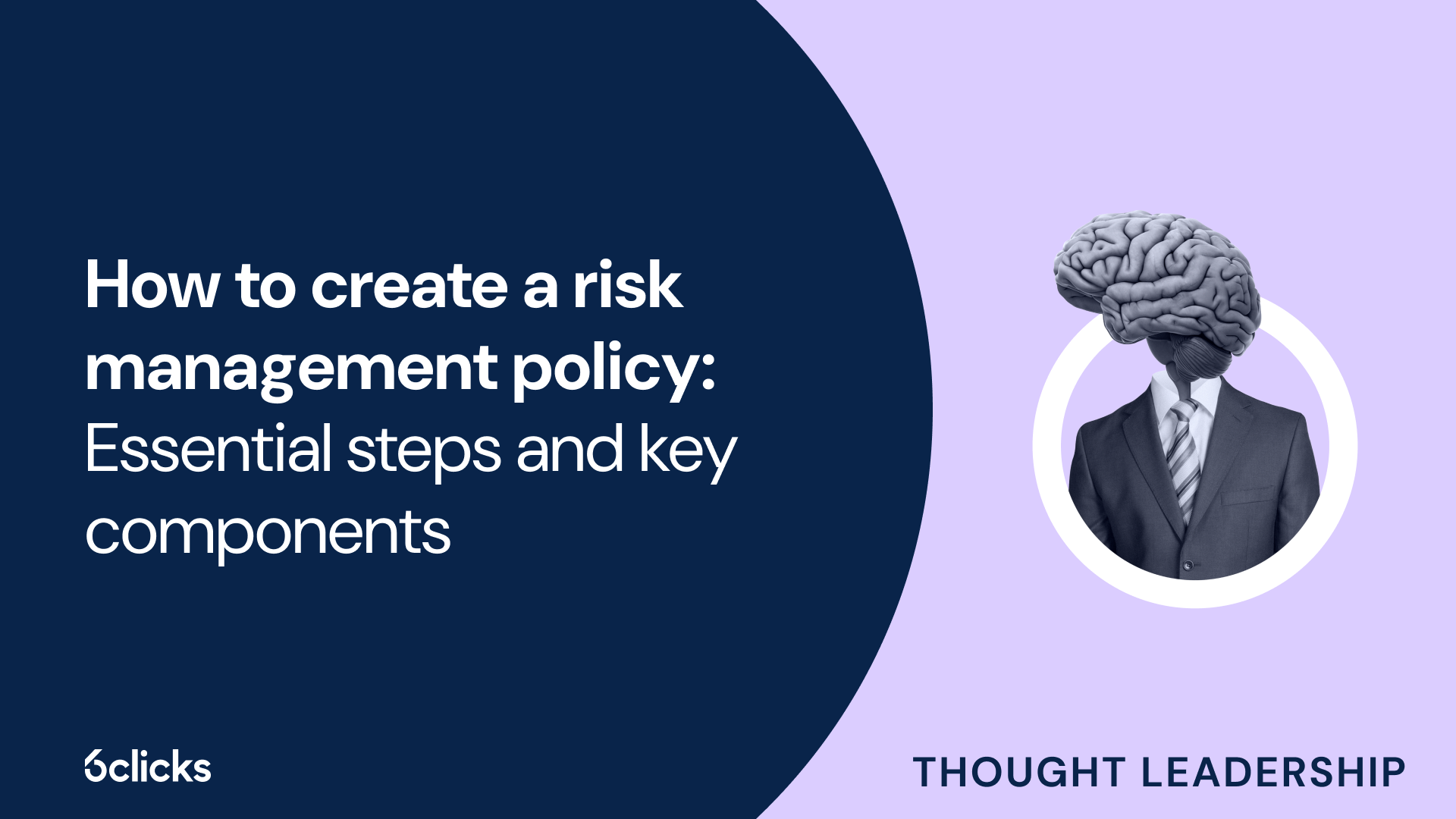
Verizon’s 2024 Data Breach Investigations Report reveals an overwhelming 16,843 Denial-of-Service attacks, 5,175 incidents of system intrusion, 3,661 social engineering incidents, and 1,997 basic web application attacks globally between late 2022 and the end of 2023. With an ever-expanding digital landscape, it is crucial for organizations to develop a risk management policy that can help them build resilience against increasing cyber threats. This blog will explore the key aspects and benefits of a risk management policy and provide you with a practical guide on how you can incorporate an effective risk management strategy within your organization.
What is a risk management policy?
A risk management policy is a comprehensive plan that details an organization’s overall approach to identifying, evaluating, prioritizing, and mitigating potential risks. It consists of systems, procedures, and tools that your organization will implement to address diverse threats such as data breaches and ransomware attacks that can endanger your assets, stakeholders, and operations.
In the context of cybersecurity, developing a risk management policy is necessary as it enables organizations to maintain a strong security posture. By proactively identifying, analyzing, and managing risks and their potential impacts on your organization, you can prevent or minimize disruptions and ensure the continuity of critical operations. A risk management policy also establishes a framework for safeguarding confidential data, facilitating compliance with broader company policies and regulatory requirements.
Components of a risk management policy
There are a few things that make up a risk management policy:
.png?width=2596&height=2068&name=Risk%20management%20policy%20(1).png)
- Risk management frameworks: Published standards and compliance frameworks that provide rules and best practices for risk management must be incorporated into your risk management strategy.
- Risk assessment procedures: A risk management policy contains detailed steps on how identified risks will be assessed, prioritized, and remediated. It also specifies who will oversee and perform risk management activities and what tools will be used.
- Mitigation strategies: Your risk management policy must also include the creation of risk treatment plans, implementation of security controls, and other actions that your organization will take to reduce the likelihood and impact of risks.
- Monitoring system: Lastly, your organization must have monitoring mechanisms in place, such as audits and assessments, to evaluate the effectiveness of the risk management policy.
Steps for creating a risk management policy
Formulating a risk management policy can be summarized into 5 steps:
1. Identify risks and vulnerabilities
The first step is to identify all the risks relevant to your organization. You can do this by examining your organizational context to identify the different internal and external factors that present risks to your business. It also involves identifying your organization’s assets, such as data, systems, networks, devices, and servers, and the corresponding threats and vulnerabilities associated with them.
2. Implement a risk management framework
A risk management framework will provide direction to your risk management policy. Some of the most widely recognized risk management frameworks that you can adapt to your organization include:
- ISO 27001 – The world’s best-known standard for building an Information Security Management System or ISMS, ISO 27001 is a risk management framework that outlines specific requirements that organizations must implement to uphold the confidentiality, integrity, and availability of data.
- NIST CSF – The NIST Cybersecurity Framework provides guidelines for managing cybersecurity risks and identifies 6 functions – Govern, Identify, Protect, Detect, Respond, and Recover – for operationalizing risk management across an organization.
- SOC 2 – The System and Organization Controls 2 is a cybersecurity compliance framework that defines 5 Trust Service Criteria – Security, Availability, Processing Integrity, Confidentiality, and Privacy – which organizations processing and managing customer data must adhere to.
- COBIT – The Control Objectives for Information and Related Technologies is an IT governance framework that provides 5 principles for aligning IT goals with business objectives. It consists of IT management procedures including a governance system and methods for technology design and implementation.
3. Establish risk management procedures
Once you have identified your risks and vulnerabilities, you can start to draft your risk management policy based on the requirements of your selected framework. Delineate procedures for risk assessment, which involves evaluating the likelihood and impact of risks, calculating the severity of risks or risk rating for prioritization, and creating risk treatment plans. You must then assign the roles and responsibilities of upper management and the departments or employees involved in risk management activities. Your policy must also define the risk management tools that you will utilize and the mitigation measures you will put in place, such as data encryption, access control, incident response plans, and other controls.
.webp?width=1091&height=695&name=Risk-management-feature-identify-manage-and-treat-risks%20(2).webp)
The 6clicks platform is an all-in-one tool that can equip you with robust IT risk management capabilities. With 6clicks, you can use turnkey risk libraries to streamline your risk identification, comprehensive risk registers to centralize risk assessment and risk treatment, and custom fields for categorizing and prioritizing risks. You can also leverage risk matrices and custom dashboards and reports to acquire enhanced insights into your risk posture. Meanwhile, with 6clicks’ integrated control management and task management features, you can implement controls and initiate actions for risk mitigation.

4. Communicate risk management policies
Now that you have a well-constructed risk management policy, you must ensure that it is properly documented and communicated across the entire organization. Executives, IT teams, and risk and compliance teams must be made aware of their obligations. Other employees must also be trained in good cyber hygiene to avoid risks and incidents and promote a culture of security within the organization.
5. Monitor risk management measures
Finally, to verify if the risk management policy is working as intended, the organization must conduct regular internal audits and assessments. This will enable you to track if your policy has met the requirements of the risk management framework, ascertain that responsibilities are being fulfilled, and validate that risk assessment procedures, controls, and treatment plans are effective in managing and mitigating risks.
Implement effective risk management with 6clicks
Leverage powerful IT risk management, security compliance, and incident management functionalities from 6clicks to strengthen your risk management strategy and achieve resilience.
Explore the 6clicks platform by scheduling a consultation with our experts.


